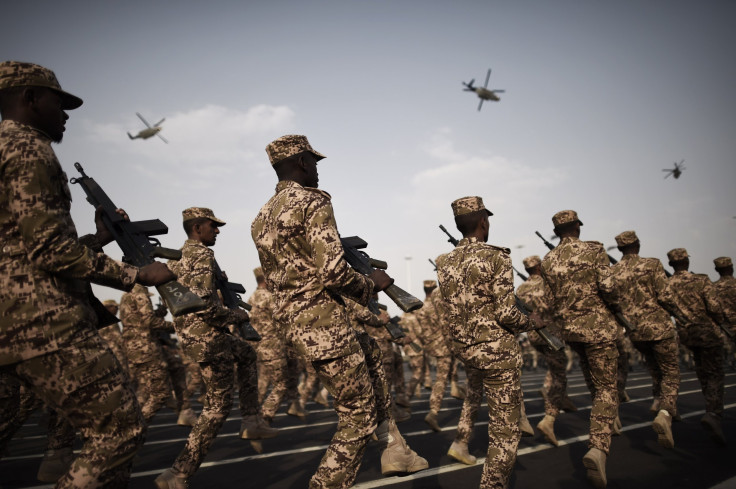Iran Nuclear Deal Will See Arms Race Continue As Middle East Fears Increase

By most measurements, preventing a country from obtaining a nuclear weapon would be considered a success. But that's not so in the Middle East, where Tuesday’s historic deal in Vienna was met with suspicion and alarm from Iran's neighbors, some of who now fear the region is on the verge of an unprecedented arms race.
Before ink had barely dried on the deal, Saudi Arabia, Egypt and Israel had publicly expressed fears and concern over the possible dangerous consequences. Egypt’s foreign ministry said in a statement on Tuesday that it hopes “the deal between both sides is complete and prevents an arms race in the Middle East, as well as ensuring the region is free of all weapons of mass destruction, including nuclear weapons." On the same day, Israel’s rambunctious Prime Minister Benjamin Netanyahu said on live television that the world would become a more dangerous place because of the agreement. Saudi Arabia, which sees Shia Iran as a competitor for leadership in the Muslim world, agreed.
But according to military and policy experts, a conventional arms race in the Middle East began long before the team of U.S.-led negotiators arrived at the Palais Coburg hotel in Vienna, Austria three weeks ago to negotiate a nuclear deal with Iran. Saudi Arabia, the United Arab Emirates, Israel and other Middle East nations have all increased defense spending in recent months amid fears that the nuclear deal that would free up billions of dollars in oil revenue for Tehran could rejuvenate the Persian country’s foothold in the region.
“The fact is, they are already stockpiling arms at a very high rate,” said Shashank Joshi, senior research fellow at the Royal United Services Institute in London. “If you look at Saudi’s defense, for example, spending has rocketed in the last 10 years because of a number of major U.S. defense deals, along with that of other Gulf States more recently.”
While the overall deal prevents Iran from obtaining conventional weapons for five years and missile technology for eight, seemingly taking Tehran out of any weapons build-up in the region, there are fears that Russia will bypass it. Sergey Lavrov, the Russian foreign minister, said on Tuesday that Moscow will continue to supply arms to Tehran.
He said “weapons supplies will be possible after corresponding procedures, notification and verification via the United Nations Security Council." He didn't mention that Russia currently has a contract with Iran for a state-of-the-art missile defense system that it hopes to deliver by the end of the year.
In all, Saudi Arabia spent in excess of $80 billion, or 9 percent of its GDP, on defense last year, a sharp increase from 2011. In buying mostly American systems such as Hellfire missiles, LAV III armored vehicles, Sea Hawk helicopters, drones and F-15 fighter jets, Riyadh has become the fourth largest defense market in the world, propelling it above the likes of Germany and the United Kingdom, according to figures released in April by the Stockholm Institute Peace Research Institute.
Similarly, the United Arab Emirates spent nearly $23 billion, nearly three times its expenditures, on defense in recent years. And Qatar, another oil-rich Gulf country, is slowly expanding its military reach and influence around the region. Last year, the small peninsula in the Persian Gulf dropped $11 billion on Apache helicopters and patriot and Javelin air-defense systems from U.S. defense companies, and in May spent another $7 billion on French fighter jets to add to its growing arsenal.
Part of the reason that some Middle Eastern countries believe that the deal will further fracture the region and cause an arms race is because of a little known U.S. law passed by Congress in 2008 that requires the United States to maintain Israel’s military superiority over any potential enemy in the Middle East. What that means is that for the U.S. to sell weapons to Gulf countries, including Saudi Arabia, that more often than not requires them to simultaneously sell weapons to Israel.
“Whatever the U.S. sells to the Gulf cannot be more advanced than what it sells to Israel,” said Jon Alterman, senior vice president in global security and geostrategy and director of the Middle East program at the Center for Strategic and International Studies in Washington, D.C. “What that means is that when the U.S. is selling arms to a country in the region it has to often make a set of sales to different countries to keep everyone happy.”
The U.S. policy has frustrated Saudi leaders, who are increasingly turning to Chinese, Russia and European manufacturers to get their weapons.
“What has made matters worse,” said Alterman, “is that since Iran negotiations began more than 20 months ago, Saudi Arabia has been spending a lot more on U.S. weapons and that means Israel has been getting the same, if not more from the U.S.”
© Copyright IBTimes 2024. All rights reserved.






















